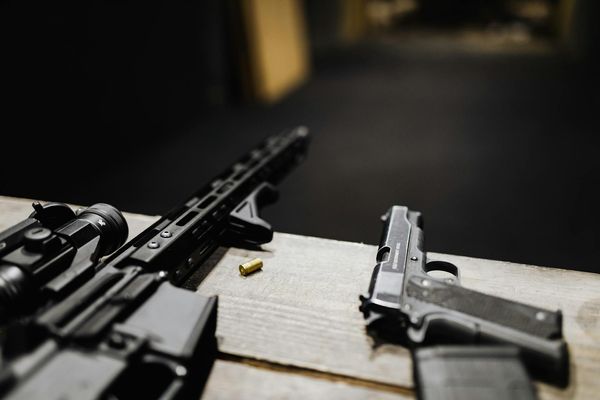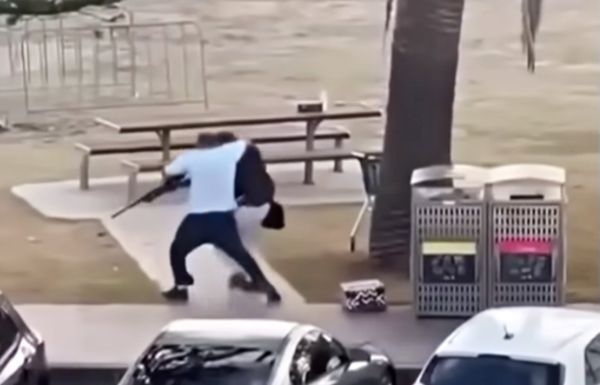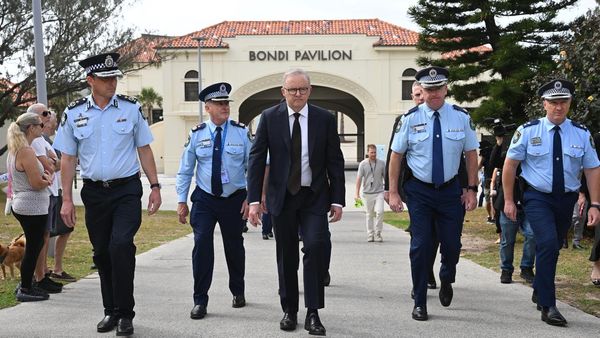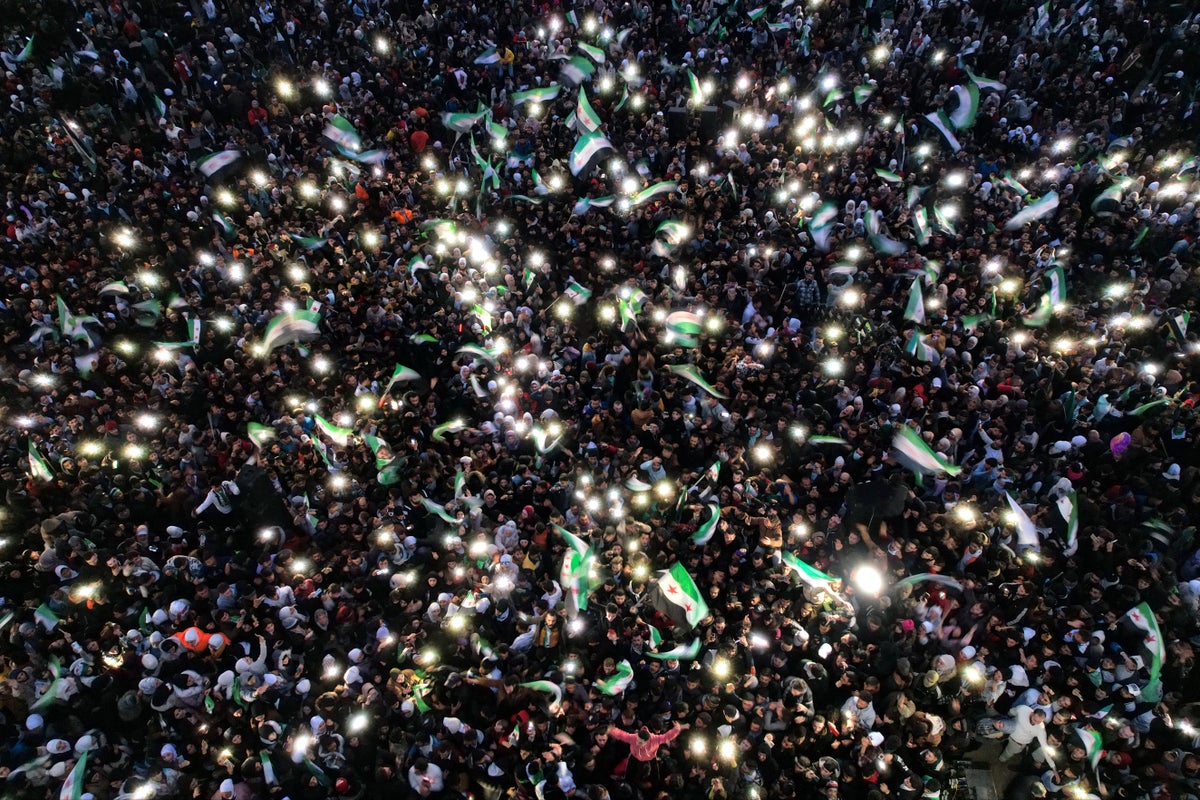
Ghost towns emerge like bleached reefs flanking each side of the long road north out of Damascus. Mile after mile of destruction flickers by as if on a loop: such a widespread level of devastation that it is almost unfathomable.
Empty, bombed-out cities, towns, and villages – once bustling hubs of life – form the scars of 13 years of brutal and bloody civil war. Thirteen years of a leader, Bashar al-Assad, trying his hardest to bomb his population into submission.
This is matched only by the industrial scale of killing that went alongside it, in his prisons, intelligence branches, and torture rooms. The full extent of this horror is only now beginning to emerge, as dozens of mass graves are unearthed, as the missing are counted as the dead, and as the chilling bureaucracy of a state that meticulously recorded almost everything is prised out of filing cabinets across the country.
It is a scale of state murder and torture of its people perhaps unprecedented in our lifetime.
“The whole world should remember that the Syrian people suffered the worst crimes of the 21st century,” a Syrian military photographer and defector – codenamed Caesar – told me in a rare interview from secretive exile just after the stunning overthrow of Assad.
The man, who has never revealed his true identity, spent two years in the early part of the conflict smuggling tens of thousands of photos out of the country. His job required him to document the corpses of emaciated, tortured, disease-riddled detainees. These images became vital and harrowing evidence of regime crimes that triggered some of the toughest sanctions against Assad.
His claim that Syria has experienced some of the worst crimes of the 21st century might at first sound hyperbolic – until you too enter the morgues lined with mutilated remains of men and women, some of their hollow faces twisted in horror like The Scream. Until you, too, stand at the foot of mass graves, with dogs sniffing out bones that reach out from the ground. Until you, too, stand in sewage-soaked underground dungeons, reading the desperate scrawls on the walls of those swallowed for years inside windowless solitary confinement cells just big enough to crouch in.
“I took almost 55,000 photographs of people who were tortured. And that was just in one place, in Damascus. It was just a snapshot in time, in geography, in place. But I can tell you this was going on everywhere else,” Caesar added. “And so, in terms of how many people have been literally tortured to death, it is in the hundreds and hundreds of thousands.”
The gravity of his words is reflected by some of the world’s most prominent international war crimes prosecutors, like Stephen J Rapp – a top international war crimes prosecutor and former US ambassador-at-large for war crimes issues, who is working with different organisations to document the mass graves and identify officials implicated in war crimes.
The murder and torture of the Syrian population was something “we really haven’t seen since the Nazis,” Rapp said during a visit to Damascus this week. Speaking to me after visiting two newly discovered mass graves, he adds that Assad deployed a “machinery of death and state terror” over his own people for decades and, crucially, documented it.
“It’s a regime that is document-mad,” he continued, baffled himself. Rapp has identified nearly 100 centres, from military intelligence branches to regular prisons, containing substantial amounts of evidence of these crimes – a bureaucracy so detailed and damning it was almost “stupid”.
And that, he assures me, is the light at the end of the tunnel. There is a good chance for some kind of justice – if the evidence, which right now isn’t secured, can be preserved, and if the world helps Syria act quickly. But how did we get here?
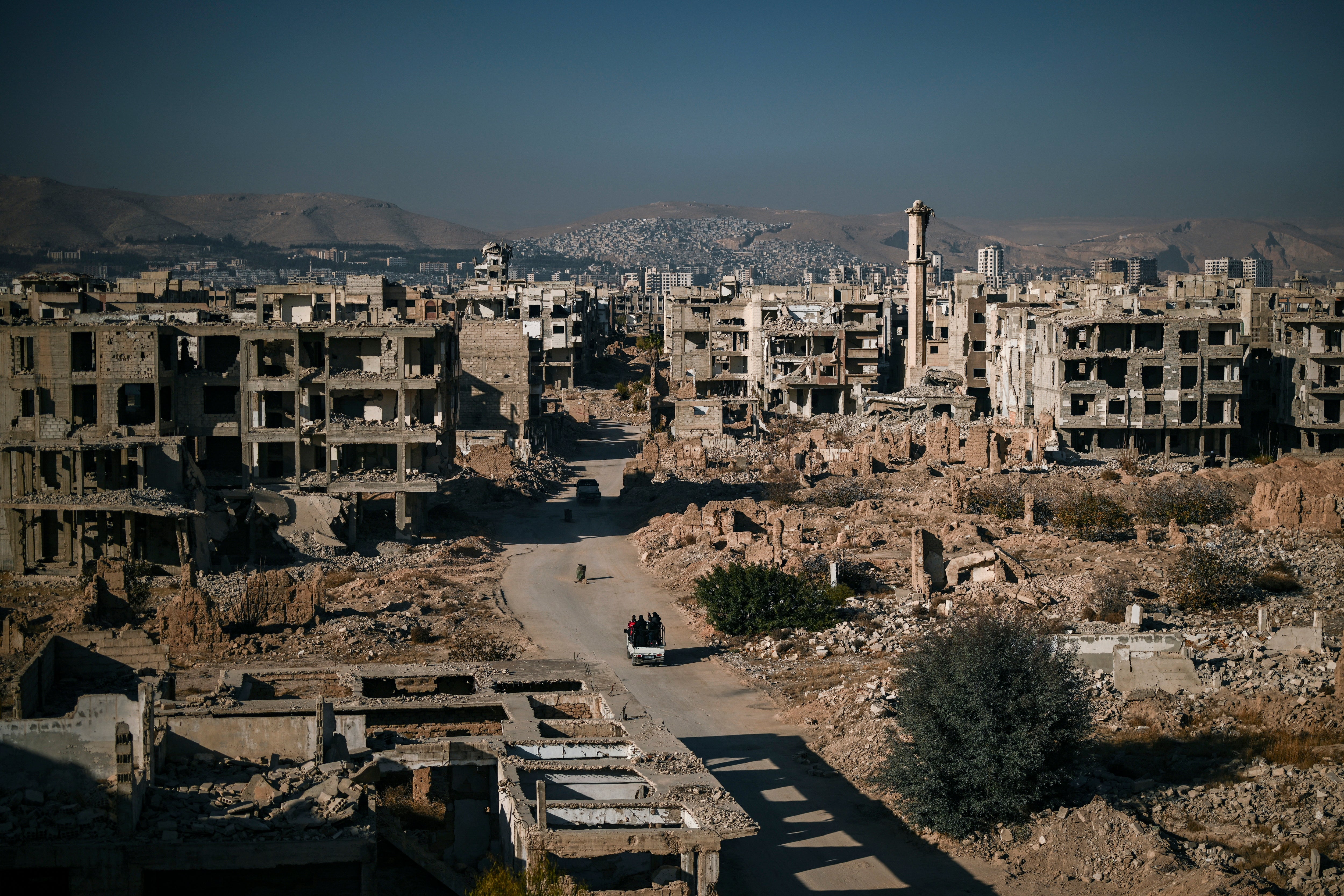
Before this December, Syria had largely been forgotten by the world. Initially, the 2011 revolution, which quickly morphed into a bloody civil war, grabbed headlines – first through revolt, then bloodshed, and later through an unmatched refugee crisis that stretched across Europe, followed by the arrival of Isis.
International superpowers scavenged over the chess pieces that emerged in the conflict-torn country. Russia and Iran backed Assad politically and militarily, Turkey carved out a corner of influence in the northwest and the US bet on its chosen forces – the Kurdish-led factions in the northeast – against its chosen enemy: Isis.
In the meantime, an entire generation of Syrians was born into refugee camps, into exile, or into terror inside Syria, where the industrial killing machine worked its way through the population. Some armed factions became increasingly radicalised.
Slowly, the country began to become synonymous with war. Anything that happened – no matter how geopolitical – was met with a shrug. War became such an inevitability that it became almost an identity; many internalised the belief that nothing could or would change.

This numb resignation, combined with domestic interests, even saw Assad welcomed back into the fold: countries across the Middle East eventually normalised relations with him and sent ambassadors to Damascus. In May 2023, the Arab League voted to restore Syria’s membership. The peace dividends from this would likely be the final nail in the revolution’s coffin.
But then December happened. A hodgepodge of rebel factions, led by the Islamist group Hayat Tahrir al-Sham (HTS), a one-time al-Qaeda affiliate that has distanced itself from its jihadi past, capitalised on a moment in time. They successfully stormed Aleppo, Hama, Homs, and finally Damascus. Russia was embroiled in Ukraine, Iran-backed groups like Hezbollah were reeling after a devastating conflict with Israel, and the population of the country was desperate for change after years of war, disappearances, and economic hardship.
And so the fact we were all able to cross into Syria – a country that had banned so many foreign journalists and left the vast majority of us with “pending” visa applications for years – was bizarre. The feared checkpoints that severed the country were half-destroyed and empty. Regime uniforms were hastily discarded in clumps, and crashed armoured vehicles were left abandoned. Instead, two rebel fighters from an unknown faction, sitting by a campfire with Kalashnikovs, waved us through.
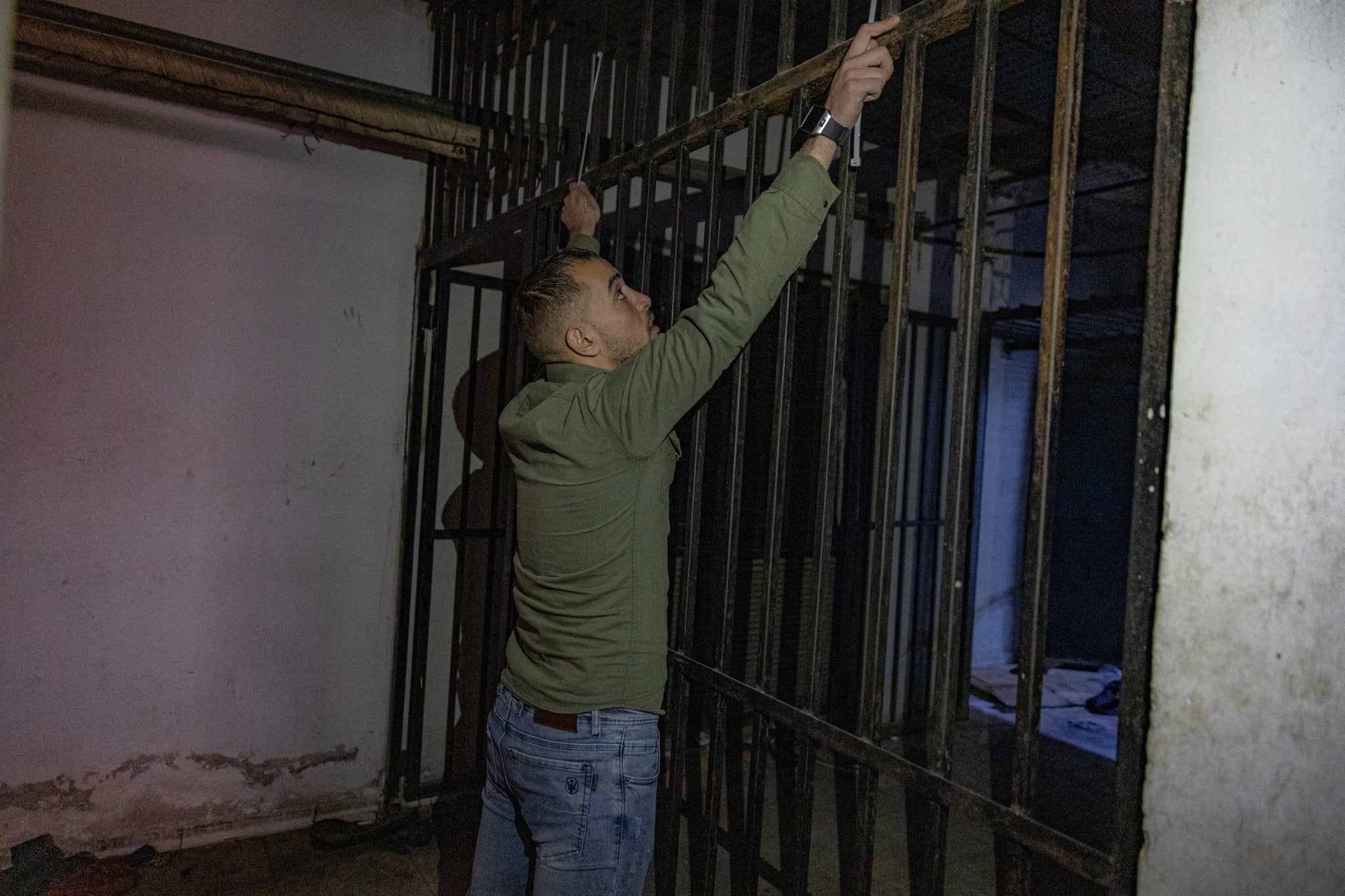
The same eeriness could be felt at the sites of the once-feared regime prisons and bases. Such as the Republican Guard compound which looks down over Damascus, and was the headquarters of the feared commander General Bassam Al-Hassan, Assad's adviser for strategic affairs, who was thought to be the key handler of Syria’s chemical weapons programme.
In the barracks, bowls of what looked like half-eaten lentils lay discarded next to washing lines of underwear and socks swaying in the breeze. The main office rooms were trashed. Filing cabinets were upended and hundreds of IDs, passports, and papers were scattered everywhere.
“People are desperately looking for information about their missing detained relatives,” said a guard, a rebel fighter deployed to secure these buildings who declined to give his name.
“But I think regime people have also come to try to steal their files,” he added. Behind him, his comrades have caught a man rifling through drawers. Locals identified him as an officer from the Assad stronghold of Latakia, a man who used to man checkpoints around the compound.
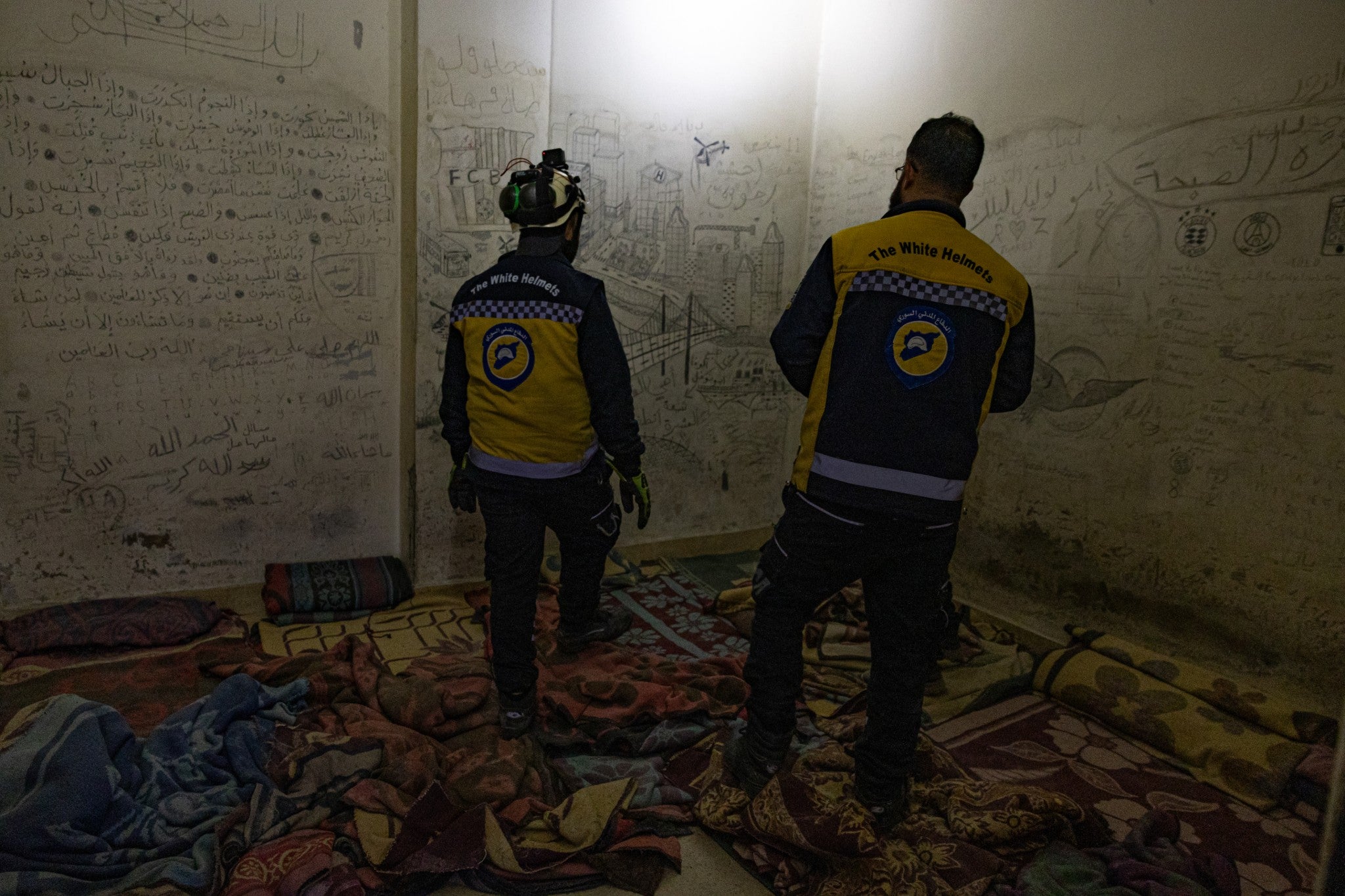
In the underground prison cells of the headquarters of the state security building in Damascus, another infamous detention centre, we encountered a team from Syria’s civil defence group, the White Helmets. They have brought in a search-and-rescue canine unit to scour the premises for any sign of secret prisons.
When news broke that Assad had fled the country and the jails had been thrown open, families descended on the main prisons and detention centres of the capital, looking for loved ones. Some of them missing for decades. For a few feverish days, there was a belief that the most infamous prison, Saydnaya, just outside the capital, might hold a secret underground facility imprisoning thousands who had never reappeared.
The White Helmets spent three days with former detainees and specialised search units, looking for any sign of life – but drew a blank.
“We still receive requests from people every day to find their relatives and so send teams and police dogs to every location to try to find them,” said one White Helmets member in front of a line of solitary confinement cells too small to lie down in.
In one of the larger cells, the wall is inexplicably covered with what appears to be an English language lesson with vocabulary ranging from “chipmunk” to “heart attack”. Nearby, there is a drawing of the number 107 London bus – a route that starts at Edgware Road. All clues as to who might have been there.
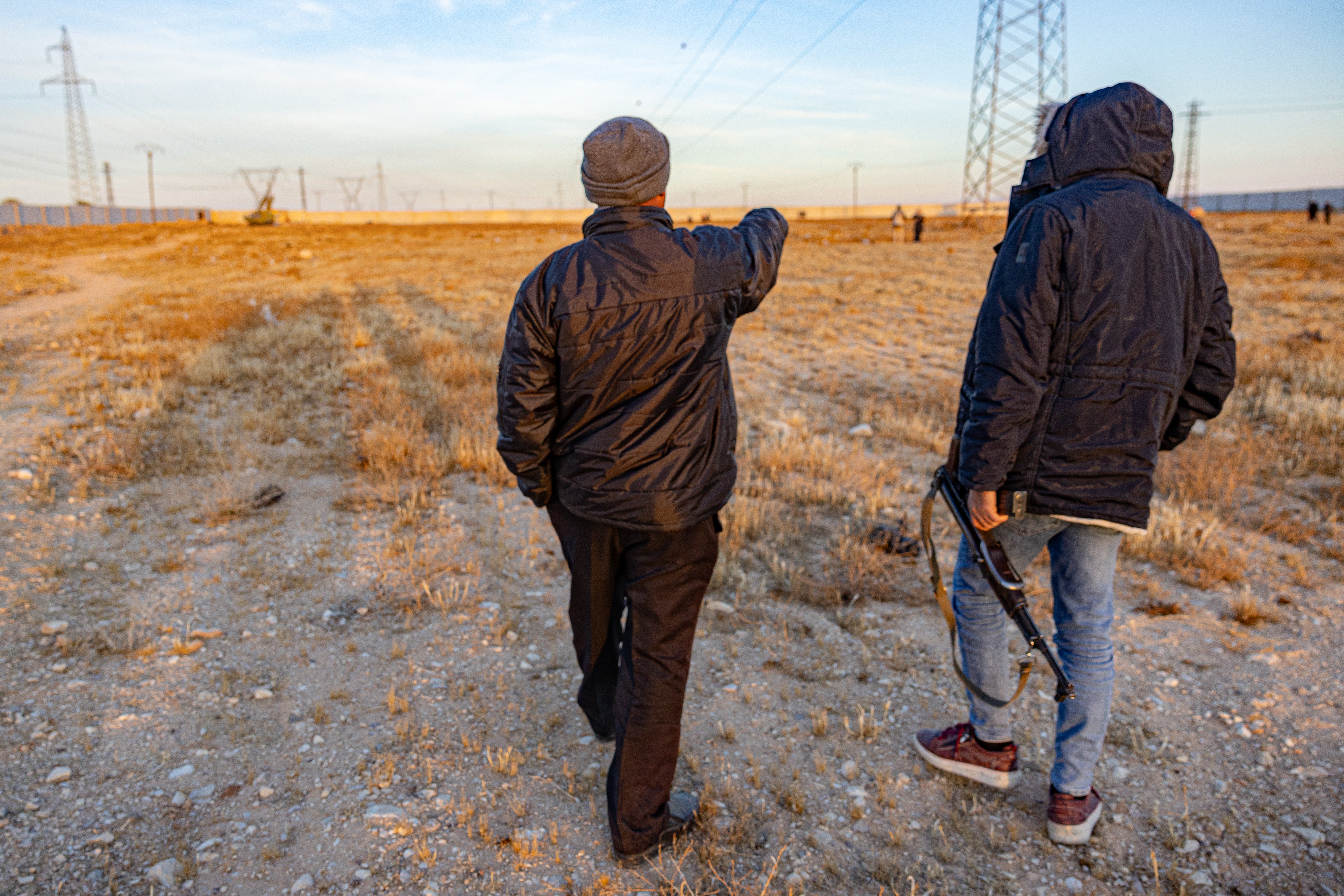
The team also pivoted to starting the grim task of documenting any bodies they find in hospitals, morgues, prisons, and mass graves, which are only just being discovered.
At one mass grave in Qutayfah, 25 miles north of Damascus, the local population speaks of years of terror. It was operational between 2011 and 2017 – tens if not hundreds of thousands of bodies could be buried here. “Anyone who dared ask questions about what was going on here was arrested,” said one resident called Alaa, 33, who says he was detained for more than a year for taking a single photo of the site, when he spotted a dog pulling a human leg from the ground.
HTS, the most powerful of the rebel groups, who are largely in charge of this strange transitional period, are keen to keep the peace – especially around such sensitive sites. They are now guarded by rebel fighters, many of whom are being sculpted into a civilian police force.
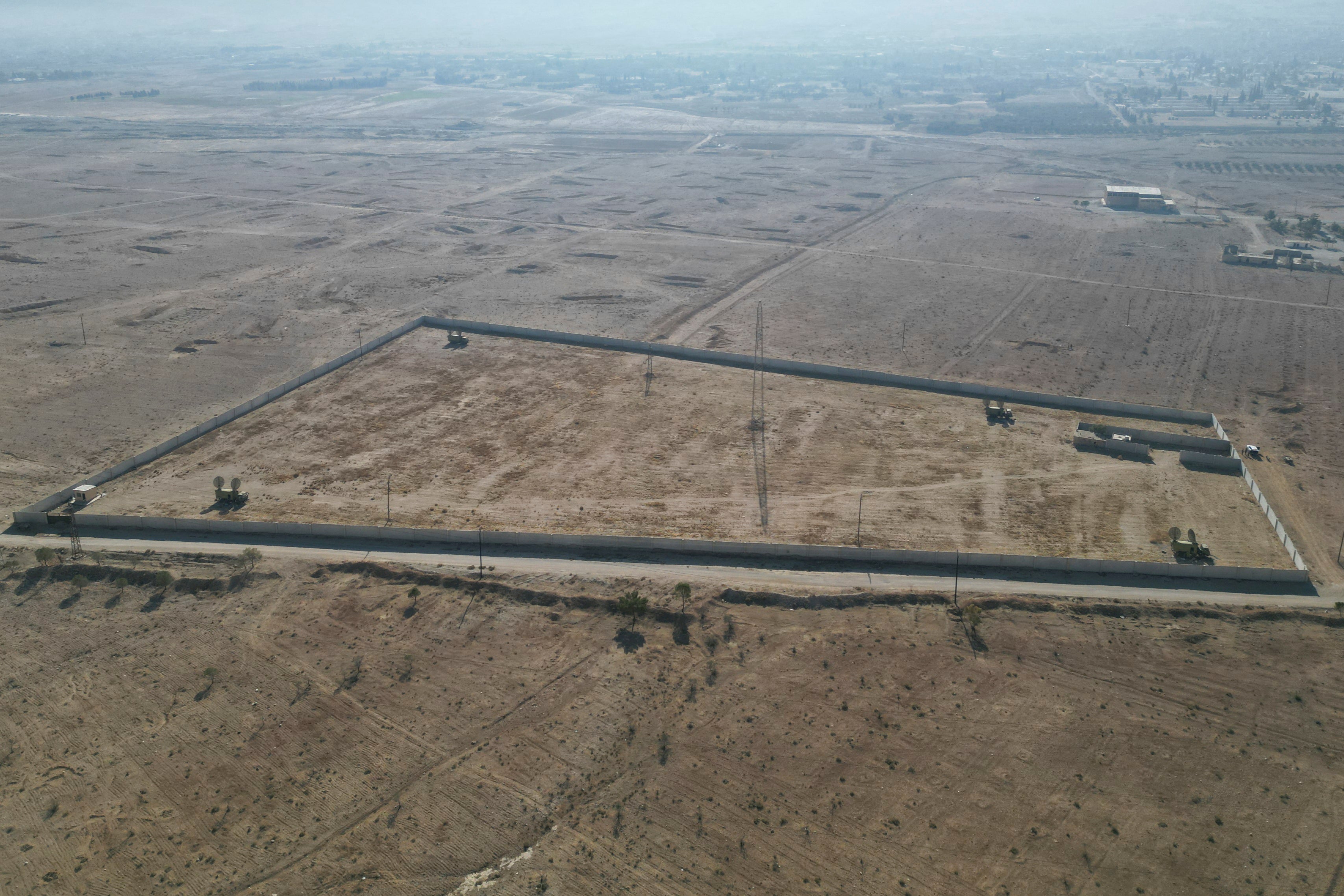
In Homs, Syria’s third-largest city, which at the start of the civil war was nicknamed the "cradle of the revolution", the new, HTS-installed police chief explained that they are trying to handle the security vacuum left by the stunning, sudden end of the feared intelligence and police network of the Assad regime.
Alaa Omran was Homs’ native government police commander until he witnessed the regime nearly flatten the Baba Amr suburb of the city, which horrified him so much that he joined an Islamist rebel group. HTS eventually recruited him to police a corner of the opposition-held northwest of Syria.
Like other police chiefs HTS has set up in different parts of Syria, he has the inevitable task of trying to maintain this tense, fragile calm. The main concerns are losing control, revenge attacks against anyone affiliated with the regime, attacks from regime elements themselves who are hiding in plain sight, and investigating decades of regime crimes. As well as – and this is probably the biggest ask of all – trying to rehabilitate the image of the police, who have been feared for half a century, all while winning over the other sections of society, including Christians, Alawites – the religious sect that Assad belongs to – and Kurds.
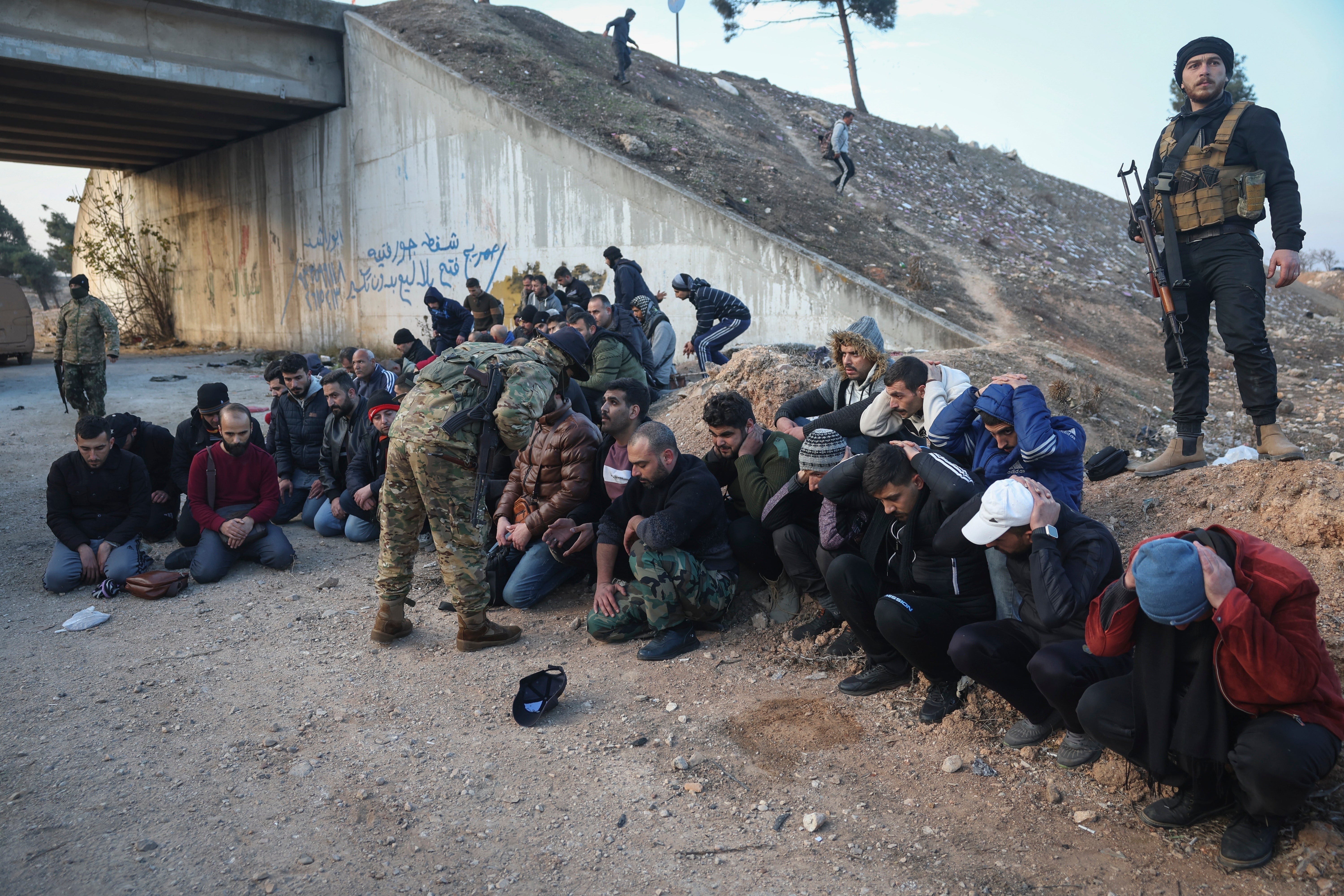
“We plan to double our forces everywhere and improve the image of the police,” he told me from his new desk, which, until just a week before, had been occupied by the head of an Assad intelligence network.
How easily this will happen is not clear, and in the Alawite neighbourhoods of the city, citizens are worried. HTS leaders have repeatedly insisted that they will not impose religious restrictions on any group in the country, yet no one has any idea if HTS will, for example, enforce hardline religious rule. They have no idea how they will manage minority communities.
“We just don’t know what the new rules will be; that lack of clarity is unnerving,” said one man.
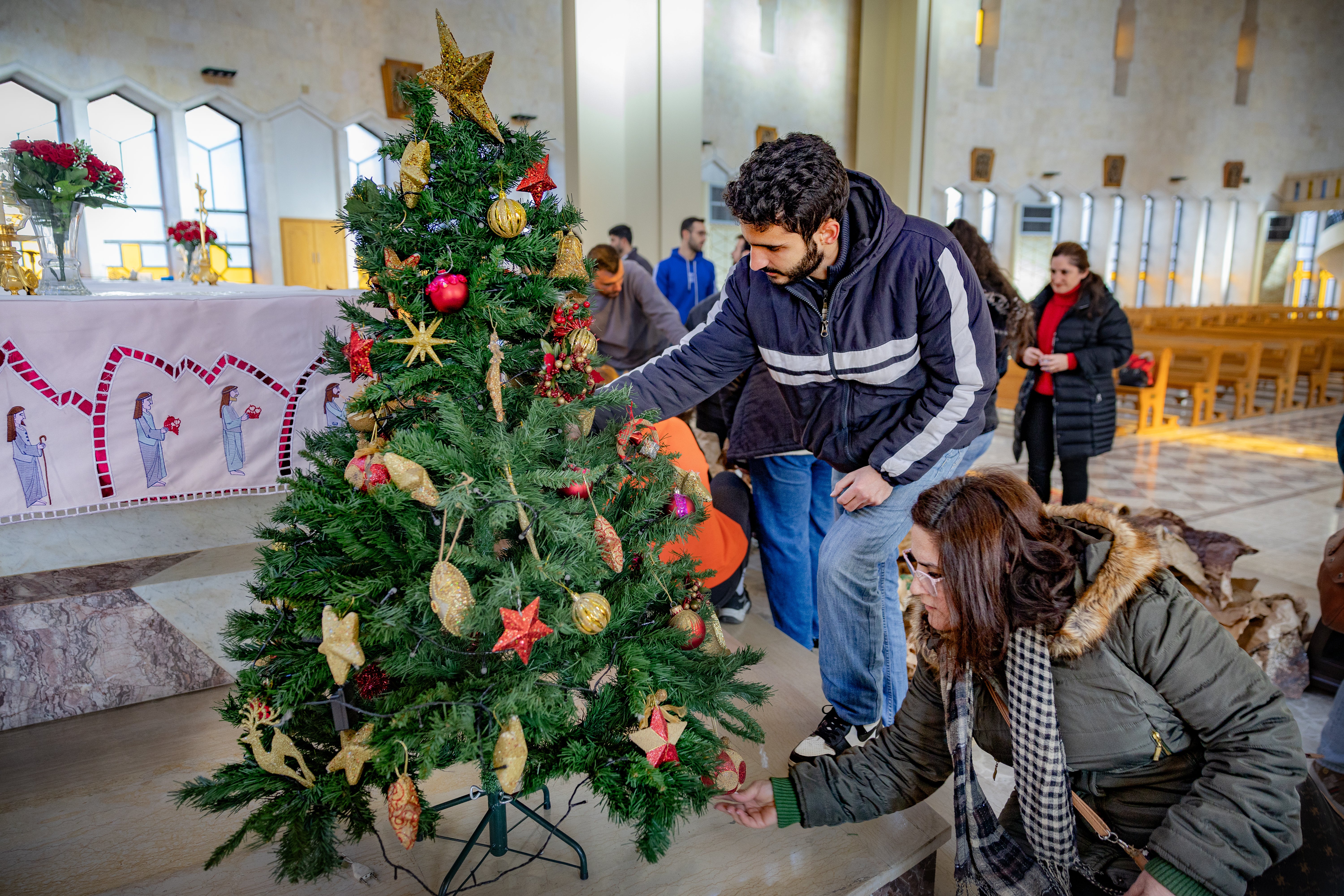
This was echoed in the Christian neighbourhoods of Aleppo, where anxious messages are sent every day saying that rebel fighters from an unspecified faction have repeatedly turned up at their alcohol stores and asked them to close. There were protests in Damascus last week by groups demanding secular rule and the involvement of women – the first such rallies since the fall of Assad.
Down in the south, in Deraa, where the 2011 revolution was ignited by a group of teenage boys inspired by uprisings in Egypt and Tunisia scribbling on the wall of their school, the feeling was, however, one of hope.
There, we stumbled on Muawiyah Siyassna, a resident of Deraa who very much started, and in some ways finished, the revolution against the hated Assad.

At just 19, he wrote four words on a wall: “It’s your turn, doctor,” referencing Assad, a one-time eye doctor: an act which got him arrested and detained for 45 days, sparking local protests that quickly spread across the country.
His story is the story of all of Syria: from abused child detainee to refugee in Turkey, he went on to fight with the Free Syrian Army, before becoming disillusioned and smuggling himself back into regime-held territory where he laid low. In early December, he picked up his Kalashnikov again and ended up joining the first wave of rebel forces from the south who took Damascus from Assad.
Still holding his rifle and sitting in the courtyard of that Deraa school where this story began more than a decade ago, he mourned the countless friends and family members – including his father – who were consumed by the ferocity of the regime, whether on the battlefield or in the prison compounds.
For him and others of his micro-generation, teenagers when the revolution started, their adult lives have been consumed by the heartbreak of autocratic rule, brutal civil war, displacement, and disappearances. Their future “is already lost” he said.
But the work of rebuilding the country, the compiling of war-crimes cases and bringing those responsible to justice could save his son’s future and the future of those to come.
“The future of the next generations is what matters," he said. "I pray for them – that they won’t face the torture we faced, that they won’t have weapons, that they won’t live in the wars we did.”

